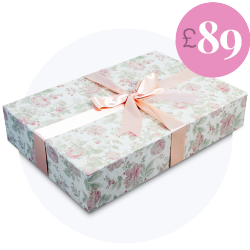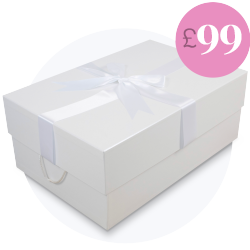Tracing the Transitions of Bridal Fashion from Victorian Aristocracy to Contemporary Sophistication
Picture this: a majestic woman, adorned in an opulent gown of snow-white silk and lace, her slender waist cinched by a narrow corsage, accentuating a lush skirt spread wide on a crinoline. A veil of thin gas, clear cotton, or lace adds a touch of ethereal mystery to her countenance. This is no ordinary woman. This is Queen Victoria on her wedding day, setting the sartorial canvas for generations of brides to come.
Wedding dresses are more than just pieces of cloth sewn together; they are historical artifacts, carrying the weight of cultural significance and fashion trends. From muslin and tulle to linen and cashmere, the fabric of these gowns tells tales of societal norms, economies, and personal preferences. Over time, these garments have transformed from high-necked, corseted gowns to jaw-dropping silhouettes adorned with stunning embellishments. Such evolution is a testament to the ever-changing landscape of the fashion world.
Despite these transformations, one particular dress stands as an enduring symbol of bridal elegance — Queen Victoria’s wedding gown. Worn at her marriage to Prince Albert in 1840, this dress not only challenged the conventions of its time but also went on to become an iconic representation of Victorian bridal fashion. Queen Victoria’s choice of a white gown was a stark departure from the colorful frocks that brides typically wore, sparking a trend that still dominates bridal fashion today.
But what secrets does this legendary dress hold? What enigmatic narratives are woven into the very threads of this gown that forever changed the course of bridal fashion?
This essay will delve into the captivating history of wedding dresses, tracing their evolution from the Victorian era to contemporary times, with a particular focus on the transformative impact of Queen Victoria’s gown. It is an exploration of the enigmatic allure of bridal fashion, a journey through time and trends, seeking to unravel the mysteries hidden within Queen Victoria’s majestic wedding gown.
History of Wedding Dresses
Imagine walking down the bustling streets of ancient Rome, where brides would wear long white tunics bordered with a deep-hued flame to symbolize their purity and fertility. In contrast, during the same era in China, brides would be resplendent in red, a color believed to ward off evil spirits and bring good luck. These are but a few glimpses into the rich tapestry of the history of wedding dresses, where every stitch tells a tale and every fabric is woven with traditions.
The wedding attire, as we know it today, has its roots deeply embedded in various cultures and civilizations. Originating from the simple tunics of Rome to the elegance of Hanfu in ancient China, these garments were more than just pieces of clothing. They embodied societal norms, religious beliefs, and cultural symbolism. The aesthetics of these outfits, however, were not constant but evolved over time, reflecting changes in society, technology, and fashion.
As we journey through time, the Middle Ages brought forth a significant shift in bridal fashion. Brides often wore their best church dress to their wedding, with no specific color or style dedicated to the occasion. However, the wealthy, not missing an opportunity for a display of opulence, would adorn their brides in costly fabrics like velvet, silk, and fur, usually in bold colors.
Moving forward to the Renaissance period, we see a marked change in the silhouette of wedding gowns. Influenced by the Spanish court, gowns became more structured with fitted bodices and full skirts, often accentuated with extensive detailing and embellishments. The color palette also shifted towards pastels, with pale blues and pinks becoming increasingly popular.
Fast-forward to the 19th century, and we step into the era of corsets, bonnets, bustles, and petticoats. The Victorian period, named after Queen Victoria, was a pivotal moment in the evolution of bridal fashion. Here, women’s fashion was dominated by full skirts that gradually moved to the back of the silhouette, creating an iconic look that would define the era. The wedding dress itself consisted of a narrow corsage that cinched the waist, paired with a lush skirt on the crinoline. Amidst this sartorial revolution, a significant event was to occur that would forever change the face of bridal fashion – Queen Victoria’s wedding.
Throughout history, societal norms and cultural influences have played a key role in shaping bridal fashion. The attire worn by brides not only reflected their personal style but also echoed the socio-economic conditions, political ideologies, and technological advancements of their time. Whether it was the simplicity of the Roman tunics reflecting the practicality of the era, or the opulence of the Renaissance gowns echoing the artistic flourish of the period, every wedding dress has been a mirror reflecting its epoch.
As we trace the evolution of wedding dresses, we realize that these garments are not just about fabrics and seams; they are relics of our past, embodying centuries of traditions, customs, and societal changes. They tell us stories of people, their lives, aspirations, and the times they lived in. And as we continue to explore the rich tapestry of bridal fashion, one cannot help but wonder – what secrets does Queen Victoria’s wedding gown hold? What tales does it weave about the era it belonged to, and the woman who wore it?
Queen Victoria’s Impact on Wedding Dresses
In the heart of London, on a frosty February day in 1840, the young Queen Victoria prepared to marry her beloved Prince Albert. Her choice of attire was far from conventional for the time. Rather than opting for heavy brocade, silk or velvet adorned with precious jewels as was the fashion among the aristocracy, she chose a simple white satin gown. The dress, designed by William Dyce, was adorned with Honiton lace, an intricate English lace-making technique that elevated the elegance of the attire. In her journal, Victoria described the dress as being “made of white satin, with a deep flounce of Honiton lace, an imitation of old. I wore also a small wreath of orange blossom.”
The choice of a white wedding gown was not entirely novel. Mary, Queen of Scots, had worn a white bridal gown in 1558. However, it was Queen Victoria’s adoption of this shade that truly catapulted it into bridal fashion. The symbolism of purity and innocence associated with the color white was congruent with the Victorian era’s societal values. The image of Queen Victoria in her white wedding dress became an emblem of the era, and brides across Europe and America began to emulate her style.
The design elements of Queen Victoria’s gown shaped not just the fashion trends of the Victorian era but also determined the quintessential bridal style for generations to come. The dress’s notable features, including its slim waist, full nineteenth-century skirt over petticoats and crinolines, have become synonymous with the classic wedding dress silhouette. This iconic style, with variations and adaptations, continues to rule the bridal fashion world even today.
Moreover, Queen Victoria’s wedding dress heralded a significant shift in dressmaking techniques. The Industrial Revolution was in full swing during her reign, introducing mass production and machine-made fabrics. The Honiton lace used in Queen Victoria’s dress was handmade, a testament to the artistry and craftsmanship of the time. Yet, the broad popularity of her bridal style necessitated faster, more efficient production methods. The advent of lace-making machines and other textile innovations during the Industrial Revolution met this demand, fundamentally changing the production of wedding dresses from an artisanal craft to an industry.
Queen Victoria’s wedding dress was much more than a beautiful garment. It was a trendsetter, a reflection of societal transitions, and a symbol of technological advancements. Indeed, the white fabric that draped the young queen on her wedding day left an indelible mark on the history and evolution of bridal fashion.
Iconic Wedding Dresses Through History
As we traverse the timeline of bridal fashion, the 20th century stands as a testament to the diversity and creativity in wedding dress designs. Undoubtedly, one of the most iconic gowns that continues to resonate with contemporary brides is the emblematic dress worn by Princess Diana on July 29, 1981. Designed by David Emanuel, her dress was a spectacle of grandeur and romance, a symbol of the fairy tale weddings many brides aspire to have.
The dress was an astonishing masterpiece; a confluence of taffeta and antique lace, adorned with pearls and sequins, boasting a cascading 25-foot train – the longest in royal history. This voluminous silhouette became a global sensation, inspiring brides around the world to embrace the regal ball gown style. Even today, the echoes of Princess Diana’s dress are evident in the celebrated A-line and ball gown silhouettes, favored for their traditional elegance and flattering fit.
While Princess Diana’s wedding dress left an indelible mark on bridal fashion, it certainly wasn’t the only royal wedding gown to do so. A recent example is Princess Beatrice’s stunning Norman Hartnell gown, which she wore at her intimate ceremony in 2020. The vintage dress, borrowed from Queen Elizabeth II, was a beautiful blend of Peau De Soie taffeta and organza, trimmed with Duchess satin, and encrusted with diamanté. In contrast to the grandeur of Princess Diana’s gown, Princess Beatrice’s choice signified a return to simplicity and sustainability in bridal fashion, reflecting the changing societal values of the 21st century.
Beyond the palace walls, renowned designers have also contributed significantly to the evolution of bridal fashion. Vera Wang, synonymous with luxury and modernity, has transformed the concept of a wedding dress with her innovative designs and bold use of color. Similarly, Justin Alexander’s collection exudes timeless elegance, infusing vintage and contemporary elements effortlessly. On the other hand, designers like Maggie Sottero and Galia Lahav have pushed the boundaries of traditional bridal wear, offering brides a blend of sophistication and glamour through their intricate detailing and unique silhouettes.
Regardless of the era, each iconic wedding dress encapsulates a moment in history, reflecting societal norms, cultural preferences, and personal style. From Queen Victoria’s simple satin gown to Princess Diana’s voluminous masterpiece, and from Princess Beatrice’s sustainable choice to the daring designs of contemporary couturiers, the journey of bridal fashion is a fascinating narrative of change and continuity, tradition and innovation.
Transitions of Bridal Fashion – A Summary
From the origins of wedding dresses in ancient civilizations to the transformative influence of powerful figures such as Queen Victoria and Princess Diana, we have journeyed through the riveting evolution of bridal fashion. Central to this narrative is the iconic white gown of Queen Victoria – a symbol of majesty and elegance that shaped the course of bridal history.
The allure of Queen Victoria’s wedding dress lies not only in its aesthetic charm but also in its profound impact on the fashion landscape. A beacon of Victorian style, her exquisite gown was a turning point, infusing bridal couture with a sense of regality that persists to this day. The enduring legacy of her dress can be seen in the corseted bodices of modern gowns, an echo of the past resonating in contemporary designs.
As we reflect on these historical transformations, we return to the initial question posed: What secrets does Queen Victoria’s wedding gown hold? It is a narrative woven into the fabric of her dress, a story of cultural shifts, societal influences, and the lasting impact of one woman’s choice. Through the prism of her wedding gown, we see a reflection of the era’s values, the Industrial Revolution’s influence, and the beginnings of modern bridal fashion.
However, the evolution of bridal fashion doesn’t end with Queen Victoria. From Princess Diana’s voluminous Emanuel gown to the chic designs of Vera Wang and Maggie Sottero, the journey of the wedding dress continues, shaped by changing tastes, social media trends, and the timeless desire of brides to look their best on their big day.
Thus, despite the constant evolution of bridal fashion, one thing remains unchanged: the indelible mark left by Queen Victoria’s majestic wedding gown. Its enigmatic secrets – a testament to the past and a compass for the future – continue to enchant us, as we marvel at the transformative journey of the wedding dress from Victorian aristocracy to contemporary sophistication.
Queen Victoria’s wedding dress is more than just a garment; it’s a symbol of cultural evolution, a reflection of societal shifts, and an enduring source of inspiration for bridal fashion. Its allure lies in its history, its influence, and the secrets it continues to hold within its opulent folds. As we step into the future, we do so carrying the legacy of this iconic gown, forever tracing the transitions of bridal fashion.
A Whole Weddings Industry
Over the years a whole industry has grown around wedding gowns and all things weddings. Wedding photographers, venues, florists, specialist catering, and much more. But what happens after your sepcial day and you look to clean and preserve your dress?
Visit the eBridal website or call (01661) 820 700, a family run business which has been specialising in the fine art of wedding dress cleaning & restoration for a quarter of a century. Brides from all over the UK come to us and say thank you for the love, care and attention which we lavish on their wedding dress; scrupulously cleaning and preserving it in a beautiful box before handing it safely back into their hands. We are used and recommended by some of the country’s most reputable wedding dress retailers and dress makers, and are extremely proud of our reputation as an outstanding wedding dress specialist, always going the extra mile to achieve the optimum result.









